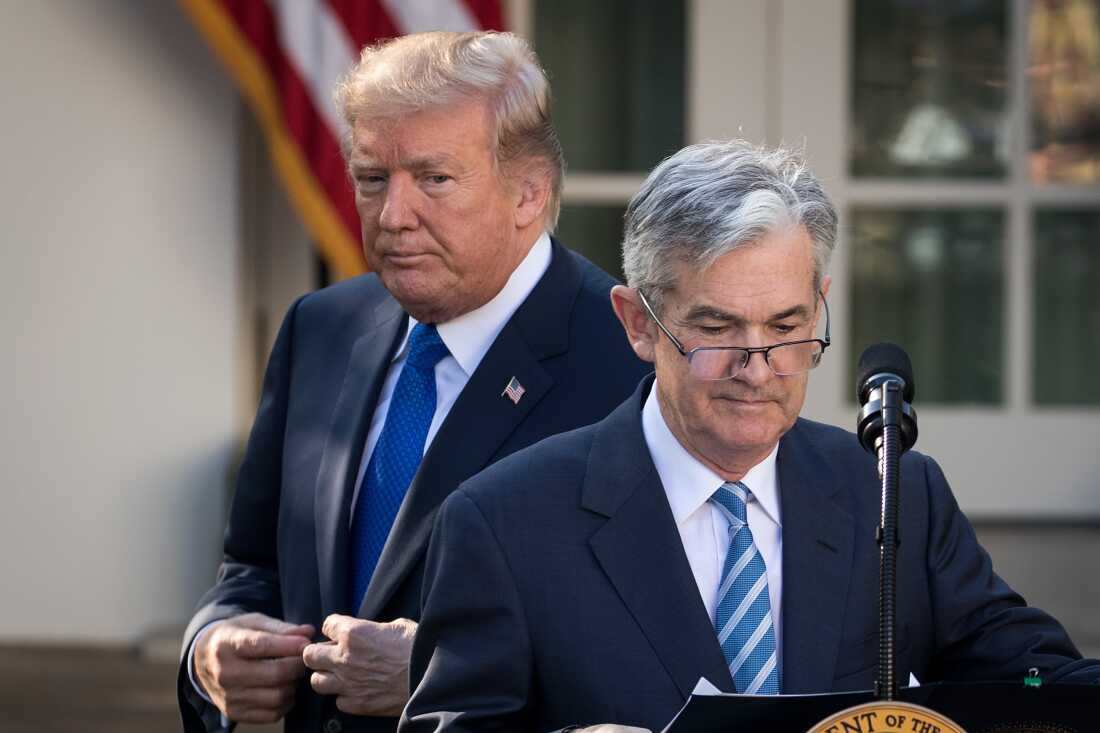How do “bad policies” impact the US dollar?
The US dollar has made a modest recovery in recent months after the carnage seen in the first half of the year. Most economists suggest that the US is following a number of ‘bad’ policies that could impact the the US dollar.

The US President Donald Trump presses Fed Chair to cut rates.
Theirs law states that good money drives out bad, and Gresham’s law, the opposite. We can adapt this to ask whether bad policy lifts or lowers the US dollar. But what is this ‘bad’ policy? Most would agree that the US tariffs are bad policy because they prevent countries from specializing in what they are good at and make them undertake activity that they are relatively poor at. For this, think US manufacturing. Anti-migration policies are also said to be ‘bad’ by most because there is clear evidence that healthy migration lifts productivity and hence living standards. Politicising the central bank is said to be another bad policy, as is deemphasising University-led research. Yet another example of ‘bad’ policy is the championing of privately-generated stablecoins over publicly-generated central bank digital currencies (CBDCs). The US has chosen this route; others have mostly gone the other way.
We could carry on the list, but what we’ve highlighted so far is probably not too controversially described as ‘bad’ policy, at least by economists. But do bad policies make bad currencies? This seems debatable, at least in the case of the US dollar.
On tariffs, research actually suggests that, both in theory and in practice, tariffs have led to stronger currencies not weaker ones. The fact that the US dollar initially fell earlier in the year may reflect the fact that investors were just too long on US assets and too long on the US dollar and had to adjust, rather than any sort of assumption that tariffs were a bad policy. If that’s the right way to read things and the asset/dollar adjustment has been fully carried out, it suggests that any new tariffs, as are being threatened for China, for example, could lift the US dollar, not lower it.
As far as migration is concerned, it may well be the case that ‘bad’ policies that send migrants back will lower productivity. But are traders and investors focussed on this, or on the Fed rate hikes that could be necessary if the effective elimination of migration tightens the labour market, lifts wages, and forces the Fed to hike? Steven Barrow, Head of Standard Bank G10 Strategy suspect it is the latter. Few would disagree with the idea that politicising the Fed pushes the US more towards Theirs Law than Gresham’s Law but, again, if investors are single-mindedly focussed on the ends (a stronger economy from artificially low US rates) and not the means (politicisation of the Fed) then the outcome could easily be a stronger dollar if this growth sucks in more foreign capital.
The last example is stablecoins. Again, many, if not most economists, would say that promoting stablecoins over CBDC’s potentially invites trouble. For instance, what happens if there is a run on the stablecoin(s)? If stablecoin providers are able to take liberties with the need to fully back stablecoins with high quality US assets, it opens up the risk of failure and potentially huge costs for the taxpayer. But the US Administration clearly feels it has a significant advantage here as virtually all stablecoins are pegged to the dollar and this gives the US both a ready demand for US government debt, that others do not have, and the capacity to spread the dominance of the US dollar if US dollar-backed stablecoins are widely used overseas.
In short, even if stablecoins are seen as ‘bad’ policy, compared to CBDCs, where there is no risk of a peg break, the bad policy may lead to a stronger dollar, not a weaker one. In other words, ‘bad’ dollars/stablecoins, may drive out ‘good’ foreign currencies, which is more like Gresham’s Law.
“Many might agree that the US is pursuing sub-optimal policies on many levels. But there’s likely to be less agreement about whether this means a bad performance for the US dollar, or a good one. We can certainly see arguments on both sides, leaving us somewhat conflicted about the outlook for the greenback. In the end, though, for us to forecast a stronger US dollar on the basis of bad policy would rather stick in the throat”, said Steven Barrow.








